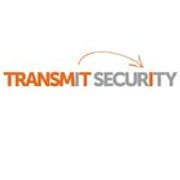Take control of your company's security with the ultimate privileged access management software buyer's guide. Find the best solutions to protect your data right now.
In today's world of digital business, privileged access management tools (PAM) have become a critical component of cybersecurity, and the need for effective PAM solutions has never been more important. Threat actors are continuously searching for ways to exploit vulnerabilities in systems and privileged accounts are a top target. Without proper management, they can result in data breaches, compliance violations and reputational damage.
PAM solutions provide granular control over privileged access, enabling businesses of all sizes to mitigate risk and establish comprehensive security strategies. As such, selecting the right PAM software is essential.
This buyer's guide provides an in-depth overview of essential features, benefits and considerations to help you make an informed decision and ensure you are investing in a solution that meets your needs.
What is PAM software?
PAM software is a crucial tool for businesses looking to secure their critical assets and data. PAM refers to a set of cybersecurity strategies and tools that aim to exert control over privileged access and permissions for users, accounts, processes, and systems across an IT environment. The goal is to enforce least privilege, restricting access rights and permissions to the absolute minimum necessary to perform authorized activities and prevent insider malfeasance, negligence and external attacks.
PAM software and tools work by gathering the credentials of privileged accounts (i.e., system administrator accounts) into a secure repository. The software features multifactor authentication, access manager, password vault, session tracking and audit logging.
While implementing PAM systems, companies may face some challenges, including managing account credentials, tracking privileged activity, monitoring and analyzing threats, controlling privileged user access and balancing security with ease of use.
Common use cases of PAM software include:
- Restricting users and ensuring secure access to sensitive systems, applications and data
- Controlling and monitoring access for third-party vendors and contractors to prevent data breaches
- Ensuring compliance with regulatory requirements regarding user access and privileges
- Automating the provisioning and deprovisioning of user access privileges to reduce the risk of errors and misconfiguration.
Types of companies that use PAM software include those that handle sensitive data, such as financial institutions, healthcare organizations and government agencies. Any business looking to secure its critical assets and data can benefit from adopting a privileged access management solution.
Overall, PAM software provides organizations with a comprehensive approach to securing their sensitive data and reducing the risk of insider threats and external attacks. By restricting and monitoring privileged access, businesses can ensure that only authorized individuals have access to their critical assets.
What are the benefits of PAM software?
In today's world, data is the backbone of businesses, and one mistake can cost millions. Your data is vulnerable and can be compromised anytime, anywhere. Cyber threats such as hacking, phishing and ransomware are on the rise, and can easily steal your business-critical information. To safeguard your data and prevent any mishaps, the implementation of a privileged access management (PAM) solution is a must.
Here are the top benefits of using PAM software for your business:
- Enhanced security: PAM software ensures that only authorized users have access to sensitive data and systems, thus reducing the risk of internal and external threats.
- Regulatory compliance: PAM software helps your business comply with regulatory requirements such as GDPR, HIPAA, SOX and PCI-DSS by ensuring that access to sensitive resources is auditable, controlled, and monitored.
- Increased efficiency: PAM software streamlines and automates access management processes, reducing the administrative burden on IT teams while saving valuable time and resources.
- Reduced risk: PAM software reduces the risk of data breaches, loss, or theft by securing privileged credentials, managing privileged sessions, and providing advanced analytics and threat detection.
- Cost-effective: The implementation of PAM software is cost-effective in the long run, as it helps prevent costly security breaches, data loss and litigation, thus protecting your business's reputation and customer trust.
The most important features of PAM software
PAM software is a crucial tool for businesses of all sizes that seek to improve their cybersecurity posture. These solutions come equipped with a variety of features that enable organizations to manage, monitor and secure the privileged accounts that are at the heart of most security breaches. In this section, we will explore ten of the most common features found in PAM software.
- Account discovery: PAM software can help organizations identify privileged accounts across their IT infrastructure, including on-premises, cloud, and hybrid environments.
- Access control: PAM software allows IT administrators to establish strict access controls over privileged accounts, including who is granted access, for what length of time, and under what conditions.
- Session recording and monitoring: PAM software enables organizations to record sessions and monitor user activity in real-time, providing enhanced visibility and control over privileged accounts.
- Privileged account vaulting: PAM software can secure privileged credentials in a digital safe, or vault, which ensures that sensitive information remains secure from unauthorized access.
- Password management: PAM software streamlines password creation, storage, and rotation, reducing the likelihood of password-related security incidents.
- Just-in-time access: PAM software offers just-in-time access capabilities that permit on-demand access to privileged accounts for a specific duration without exposing credentials.
- Two-factor authentication: Many PAM software providers offer multifactor authentication (MFA), which provides an additional layer of security by requiring users to authenticate using more than one method.
- Role-based access controls: PAM software streamlines access by assigning permissions based on roles and responsibilities, instead of granting access to individual users.
- Compliance reporting and auditing: PAM software offers robust compliance reporting and auditing capabilities, making it easy for organizations to maintain regulatory compliance.
- Integrations: PAM software can integrate with other security tools and IT systems, such as SIEMs, to provide a complete cybersecurity ecosystem.
In conclusion, PAM software offers numerous benefits and features that are essential for achieving robust cybersecurity. By implementing these technologies, businesses can ensure that their privileged accounts are protected, remain secure, and comply with industry regulations.
What should you consider when assessing PAM solutions?
In today's highly connected world, businesses are facing numerous security challenges as cybercriminals become more advanced in their attacks. One of the significant challenges is managing and securing privileged access, which gives employees access to certain critical information and resources needed to perform their job functions.
Privileged access is essential in any business, but if it falls into the wrong hands, it can pose significant risks. That's where PAM comes into play. It provides businesses with the necessary tools to effectively manage and secure privileged access.
When purchasing a PAM solution, businesses must consider several factors to ensure they choose the right solution that meets their requirements. Here are some factors to consider:
- Access control and authorization management capabilities
The software must offer comprehensive access control and authorization management capabilities. It should provide businesses with the flexibility to customize roles and permissions to specific users and groups. The software should also have the ability to govern access to system resources, applications, and files.
- Comprehensive visibility and auditing capabilities
The software must offer complete visibility and auditing capabilities, such as recording all activities performed by privileged accounts. This ensures that businesses can trace any activity back to the user responsible and helps detect any fraudulent activity. It should also provide real-time monitoring and alerts to suspicious activities.
- Ease of use and integration with existing systems
Businesses should choose software that is easy to use and integrate with their existing systems. It should be intuitive, easy to configure, and require minimal technical expertise to set up. The software should also be compatible with commonly used operating systems and applications.
- Scalability and flexibility
The software must be scalable and flexible enough to meet the growing needs of the business. As the organization expands, the software should be able to accommodate the additional users and resources without significant changes to the system architecture.
- Vendor credibility and support
It's crucial to choose a vendor with a credible reputation and good track record in the market. The vendor should have experience in the PAM space and proven success in delivering successful implementations. The vendor should also provide comprehensive support and training to ensure a positive user experience.
In conclusion, choosing the right solution is essential for businesses that want to secure their systems from cyber-attacks and maintain their reputation. By considering the factors mentioned above, businesses can make an informed decision that meets their specific needs and requirements.
The biggest PAM software trends
PAM software plays a critical role in protecting organizations from cybersecurity threats by granting a select few access to sensitive data, systems, and infrastructure. Moving forward, we can expect PAM solutions to evolve alongside advancements in technology.
One of the biggest trends we'll see in the coming years is the rise of cloud-native PAM tools, which offer easier access and management of privileged accounts and eliminate the need for on-premises installations.
Another trend is the increased use of automation, allowing for faster and more efficient management of accounts and access. Additionally, PAM solutions will prioritize Zero-Trust access and provide detailed logs to support auditing and compliance reporting.
As the threat landscape continues to evolve, it's important for organizations to stay informed and implement the latest PAM tools to ensure maximum security.



